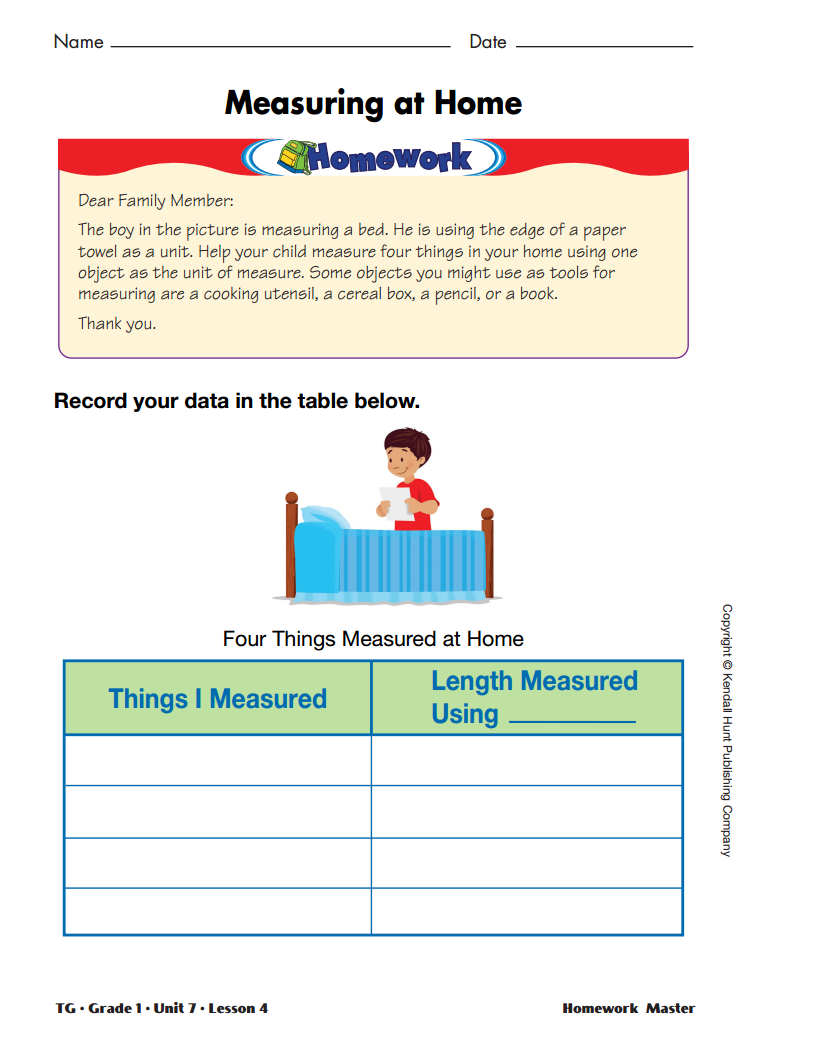When the class graph is complete, pose the following questions:
- What did we all do that was the same? (We measured
desks that were all the same size.)
- What did we do that was different? (We used different
units. Some were short and some long.)
- What units did we use? Where do you see them on
the graph? (Students name units. The names of
the units are under the bars.)
- What is the longest unit that we used? What can
you say about that bar? (The bar for the [longest
unit] is the shortest bar.)
- Why is that bar the shortest? How many of the
[longest units] did it take to measure the desk?
(We only needed a few because they were long.)
- What is the shortest unit that we used? What can
you say about that bar? (The bar for the [shortest
unit] is the tallest bar.)
- Why is that bar the tallest? How many [shortest
units] did it take to measure the desk? (We needed
a lot of the [shortest units] because they were
small.)
- What would happen if we used a stapler as a unit?
- What would happen if we used a pumpkin seed?
- What would happen if we used my shoe?
Have students check their predictions.
Focus on the relationship between the size of the
unit and the number of units needed to measure the
desk. From examining and discussing the graph,
students should see that the longer the unit, the
smaller the number of units needed.
Assign the Measuring at Home Homework Master.













